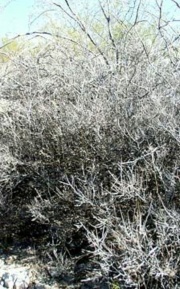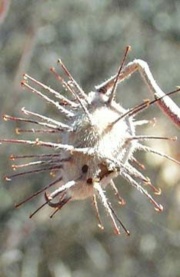Difference between revisions of "Ratany"
Jump to navigation
Jump to search
| Line 1: | Line 1: | ||
[[File:kgrayiform.jpg|thumb|White ratany ''Krameria grayi'']] | [[File:kgrayiform.jpg|thumb|White ratany ''Krameria grayi'']] | ||
== Description == | == Description == | ||
| − | [[File:kgrayifruit.jpg|thumb|White ratany | + | [[File:kgrayifruit.jpg|thumb|White ratany fruit]] |
The root of a shrub, ''Krameria triandria'' or ''Krameria grayi'', native to Peru. Hot-water extracts from ratany root were used for tanning leather. Ratany contains up to 40% [[tannin|tannins]]. It produces a dark brown color leather. | The root of a shrub, ''Krameria triandria'' or ''Krameria grayi'', native to Peru. Hot-water extracts from ratany root were used for tanning leather. Ratany contains up to 40% [[tannin|tannins]]. It produces a dark brown color leather. | ||
Latest revision as of 10:49, 18 October 2022
Description
The root of a shrub, Krameria triandria or Krameria grayi, native to Peru. Hot-water extracts from ratany root were used for tanning leather. Ratany contains up to 40% tannins. It produces a dark brown color leather.
Synonyms and Related Terms
payta; ratany (Krameria triandria); white ratany (Krameria grayi)
Physical and Chemical Properties
- Small dense shrub growing to 1 m.
- Bark = gray, split with shallow fissures.
- Leaves = narrow ovate (1 cm long) with velvety gray on top.
- Fruit=single fuzzy skinned pod covered with spikes
Resources and Citations
- G.S.Brady, Materials Handbook, McGraw-Hill Book Co., New York, 1971 Comment: p. 653
- Virginia Tech Dendrology website at www.fw.vt.edu/dendro/dendrology/main.htm (accessed Oct. 8, 2005)

